Elder Law Resources
New Study Finds Financial Abuse of Elderly Is Costly and Vastly Underreported
9/10/2009
Elder financial abuse costs older Americans more than $2.6 billion a year and is most often perpetrated by family members and caregivers, according to a new report released by the MetLife Mature Market Institute
entitled, Broken Trust: Elders, Family and Finances.
The 40-page report notes that for each case of abuse reported, there are at least four that go unreported. In addition, the economic downturn may increase vulnerability.
The report, which is accompanied by tip sheets for older adults and families on how to prevent elder financial abuse, states that up to one million older Americans may be targeted yearly. Family members and caregivers are the culprits in 55 percent of cases, although financial losses are higher with investment fraud scams.
The National Adult Protective Services Association (NAPSA)
suggests that the "typical" victim of elder financial abuse is between the ages of 70 and 89, white, female, frail and cognitively impaired. She is trusting of others and may be lonely or isolated, although reports show that there is a very diverse population of victims.
"Elder financial abuse has been called the 'crime of the 21st century,' " said Sandra Timmermann, Ed.D., director of the MetLife Mature Market Institute. "With the present state of the economy, older Americans are at a greater risk than ever of having their financial security threatened. And, for every dollar lost to theft and abuse, there are still more related costs associated with stress and health care and the intervention of social service, investigative and legal entities.
"This is also a growing problem made greater by the increase in the number of older Americans as targets, the relative wealth of this group, a change in family structure and the availability of technology that may make such abuse somewhat easier," said Timmermann.
Sixty percent of substantiated Adult Protective Services cases of elder abuse involve an adult child, the report found. Sons are 2.5 times more likely than other family members to take advantage of parents. Signs of abuse include indications of intimidation by or fear of a caregiver, isolation from family and friends, disheveled appearance, anxiety about finances, new "best friends" and missing belongings.
"One trait perpetrators of elder financial abuse have in common is that they exhibit excellent persuasion skills," says the report. "They are very good at cultivating relationships and convincing older adults that they are worthy of their trust and money. In general, perpetrators are not bound by conventional norms or business ethics, and rationalize their criminal and abusive behavior."
According to the report, elder financial abuse can be prevented by the following:
- Education about one's rights and about the various types of consumer fraud and scams;
- Financial conservatorship and/or power of attorney for those who are vulnerable;
- Assignment of responsibility to a trusted outside person, if children are a concern;
- Additional media attention for this issue;
- Training financial professionals to properly assist older customers;
- Assistance from social services, medical/nursing personnel, government agencies;
- Reporting suspected cases of financial abuse to local authorities.
To read the full report, click here.
For the ElderLawAnswers article, "Elder Abuse Web Site Offers Resources and Contacts," click here.
For the article, "Identifying and Dealing With Financial Abuse of the Elderly," click here.

Centrally Located in Brighton
near Cobbs Hill:
1399 Monroe Avenue,
Rochester, NY 14618
Map & Directions
Weekly News & Updates
Subscribe now and get our FREE Guide, "The Top Eight Mistakes People Make with Medicaid Qualification"
Rochester Elder Law
All Rights Reserved
Legal Disclaimer: We have organized and prepared this website to provide general information about our firm. Content is subject to change without notice. The material presented here is not legal advice and is not to be acted on as such. You should consult an attorney for advice regarding your individual situation. We invite you to contact us and welcome your calls, letters and electronic mail. Viewing this web site or contacting us does not create an attorney-client relationship. Please do not send any confidential information to us until such time as an attorney-client relationship has been established. This site may contain attorney advertising. However, prior results do not guarantee a similar outcome.






